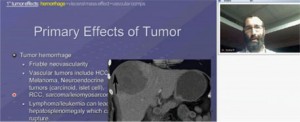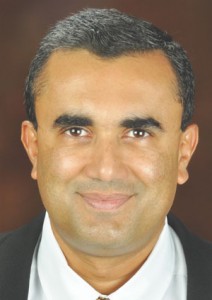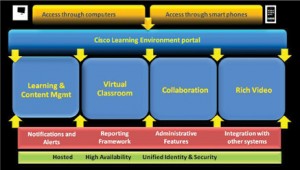e-Teaching can be applied, not just to paediatric cardiology and radiology as has been successfully done in India, but to all branches of medical specialists in India
By Dr Arjun Kalyanpur, Chief Radiologist and CEO of Teleradiology Solutions
 Although the number of medical colleges in the country has been increasing steadily and currently stands at 260, unfortunately there is an acute shortage of teaching manpower in the existing medical colleges. This shortage is in the region of 20–25 percent in most departments and as high as 33 percent in some departments, based on data published in the National Medical Journal of India. The shortages are particularly acute at the postgraduate level. Hence, while medical school training in India is phenomenal and world renowned in quality, speciality and super speciality training in India has been the purview of a limited number of institutions in India.
Although the number of medical colleges in the country has been increasing steadily and currently stands at 260, unfortunately there is an acute shortage of teaching manpower in the existing medical colleges. This shortage is in the region of 20–25 percent in most departments and as high as 33 percent in some departments, based on data published in the National Medical Journal of India. The shortages are particularly acute at the postgraduate level. Hence, while medical school training in India is phenomenal and world renowned in quality, speciality and super speciality training in India has been the purview of a limited number of institutions in India.
The problems in the field of super speciality training in India are several. The number of trainers i.e. specialists interested in teaching is limited in number. Even if the trainers would like to focus on training, the amount of energy and time needed for clinical work makes content creation/class delivery a challenge. The quality is variable and different institutions have different protocols/approaches to patient care so there is no standard content necessarily taught across the country.
Solutions
The use of technology in speciality training is an innovative solution. The use of ‘e’ in training for specialists has been attempted via teaching websites and distribution of DVD’s/CD’s. However these are non-interactive i.e. there is no direct interaction between the student and teacher and thus, although available, they do not have a desired impact.
An ideal e-learning platform would allow student teacher interaction. Such a platform should be easy to use since many doctors are limited in their technologic capabilities. It should work on inexpensive bandwidth which is easily available. It should be web based so that the teacher and student can log in from anywhere anytime.
Such a platform should have the ability to demonstrate a power point presentation as well as a drawing board. It should be recordable so classes can be replayed. It should be interactive such as a question and answer (Q and A) session can complete the class.
Since May 2010, a not for profit trust ‘Heart strings, a People4people initiative’ run by Dr Sunita Maheshwari, a pediatric cardiologist in Bangalore, partnered with Cisco Systems to pilot live interactive e-teaching in Pediatric Cardiology. From May 2010 to September 2011, 125 simultaneous e-classes have been conducted by faculty across India and abroad, using this technology, in Pediatric Cardiology for postgraduates in Bangalore, Kolkata, Chennai, Delhi and Nigeria.
 Similarly in radiology, Teleradiology Solutions has used the e-teaching method to disseminate teaching in radiology to postgraduates in India as well as to practicising radiologists. Dr Dharmaprakash and Dr Sridhar have been coordinating daily training sessions which are beamed to radiologists in Delhi, Hyderabad and Mumbai using the Cisco e-teaching platform. Additionally, a series of e-lectures by distinguished international faculty in radiology have been delivered from locations such as Phoenix, AZ, Birmingham, AL, Ann Arbor, MI, Philadelphia, PA and Jerusalem, Israel, which have been viewed in real time by radiologists and postgraduates at locations throughout India.
Similarly in radiology, Teleradiology Solutions has used the e-teaching method to disseminate teaching in radiology to postgraduates in India as well as to practicising radiologists. Dr Dharmaprakash and Dr Sridhar have been coordinating daily training sessions which are beamed to radiologists in Delhi, Hyderabad and Mumbai using the Cisco e-teaching platform. Additionally, a series of e-lectures by distinguished international faculty in radiology have been delivered from locations such as Phoenix, AZ, Birmingham, AL, Ann Arbor, MI, Philadelphia, PA and Jerusalem, Israel, which have been viewed in real time by radiologists and postgraduates at locations throughout India.
The Cisco Remote Education Center platform is completely internet based with no special equipment or software required. It enables highly interactive, online classroom learning with live audio, video, white board and presentations. Instructors need only a computer with Internet, webcam and an optional digital notepad. Remote class rooms need a computer with internet, webcam, microphone, speakers and an optional projector. Instructors can easily create content, manage and schedule courses.
The advantages of virtual live e-teaching in medicine are several. One trainer can teach multiple students in multiple geographic locations at the same time, obviating the issue of teacher shortage. The best teachers from around the world can participate in teaching increasing the quality of education for each individual student. The same content can be disseminated to all the students undergoing specialist training so that there is a national consensus on diagnostic and management approach among all trainees/centers.The e-classes can be recorded and replayed so they can be viewed repeatedly by the same group or new trainees through the internet. The question and answer sessions are fully interactive and similar to a normal classroom. Additionally, no significant up-front cost is involved as the system is fully Internet based. There is no hardware or servers or software to install and maintain.
We believe that e-teaching is an innovative solution that can be applied, not just to Pediatric Cardiology and Radiology as has been successfully done in India, but to all branches of specialist and superspecialist medical training in India and this part of the world.

Dr Arjun Kalyanpur
Chief Radiologist and CEO of Teleradiology Solutions,
Bangalore; and Board Advisor to Telerad Tech






















